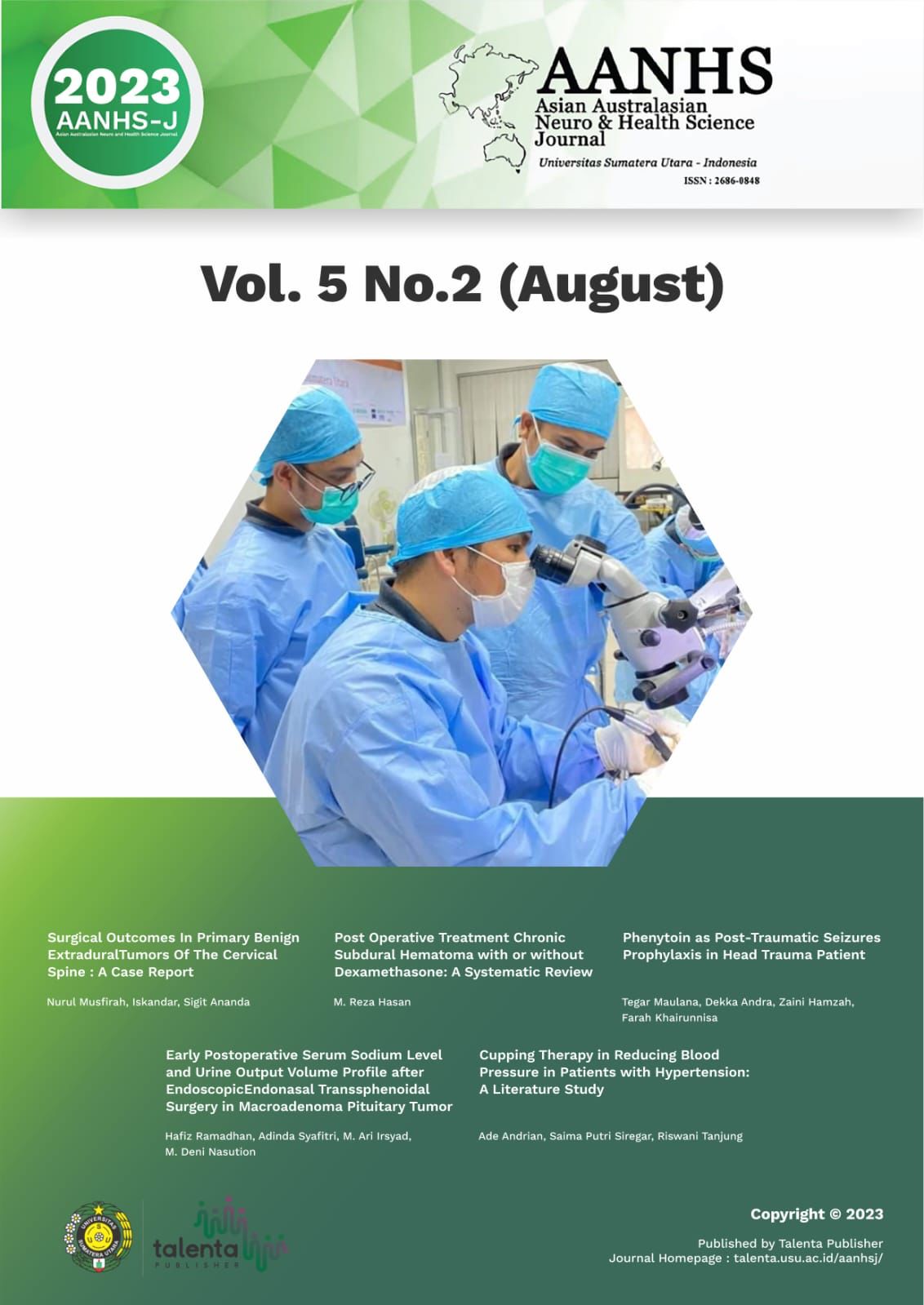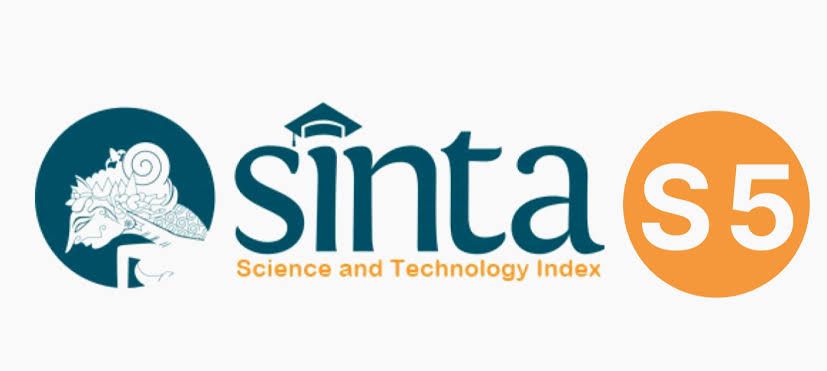Early Postoperative Serum Sodium Level and Urine Output Volume Profile after Endoscopic Endonasal Transsphenoidal Surgery in Macroadenoma Pituitary Tumor
DOI:
https://doi.org/10.32734/aanhsj.v5i2.12347Keywords:
surgery, MTS, ADHAbstract
Introduction: Surgery is still the initial treatment of choice to for the majority of date with pituitary tumors. One of the most commonly performed minimally invasive neurosurgical procedures is transsphenoidal endoscopic endonasal surgery (ETS) and microscopic transsphenoidal surgery (MTS), used commonly for the resection of pituitary tumors. Neurosurgical operations for pituitary and suprasellar tumors may result in postoperative complications due to the crucial anatomical location of these tumors. The resulting postoperative complications can manifest as anterior or posterior pituitary dysfunction, particularly sodium disturbances, due to the changes in antidiuretic hormone (ADH) secretion, which remains one of the most frequent postoperative reasons for hospital readmission.
Method: The aim of this study is to describe and determine the frequency distribution of patient characteristics who underwent endoscopic endonasal transsphenoidal resection of pituitary adenoma at Universitas Sumatera Utara Hospital between 2021 and 2022.
Result:Â The findings of this study showed the frequency distribution of patient characteristics who underwent endoscopic endonasal transsphenoidal resection and postoperative sodium serum level profile as well as postoperative urine output profile.
Discussion: The discussion section briefly discusses the findings and their implications. It mentions the high prevalence of headache and visual deficits among the patients, which aligns with previous studies. It also provides an overview of normal water balance and the pathophysiology of water balance disorders after pituitary surgery.
ÂDownloads
Downloads
Published
How to Cite
Issue
Section
License
Copyright (c) 2023 Asian Australasian Neuro and Health Science Journal (AANHS-J)

This work is licensed under a Creative Commons Attribution-ShareAlike 4.0 International License.
The Authors submitting a manuscript do understand that if the manuscript was accepted for publication, the copyright of the article shall be assigned to AANHS Journal.
The copyright encompasses exclusive rights to reproduce and deliver the article in all forms and media. The reproduction of any part of this journal, its storage in databases and its transmission by any form or media will be allowed only with a written permission from Asian Australasian Neuro and Health Science Journal (AANHSJ).
The Copyright Transfer Form can be downloaded here.
The Copyright form should be signed originally and sent to the Editorial Office in the form of original mail or scanned document.














